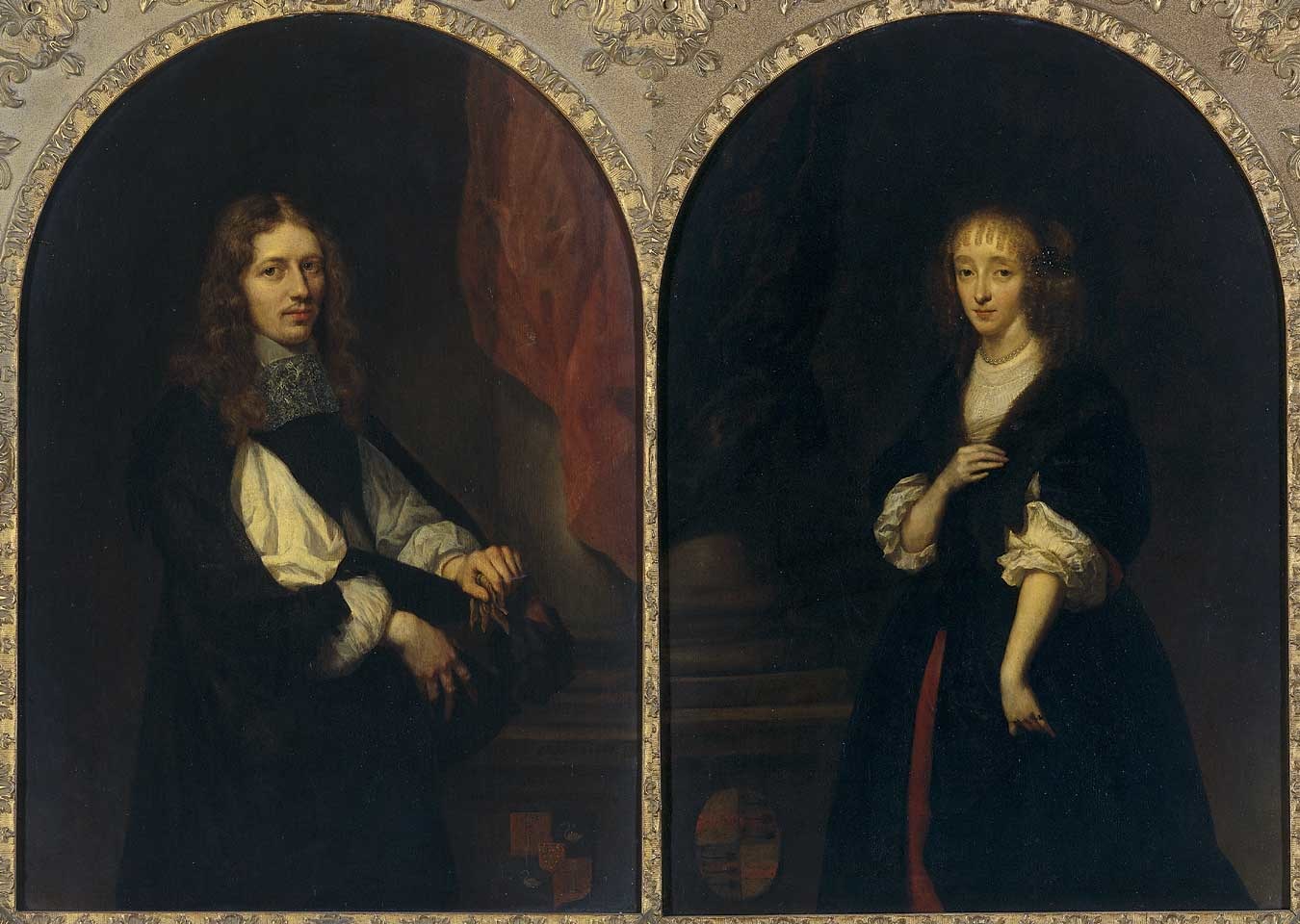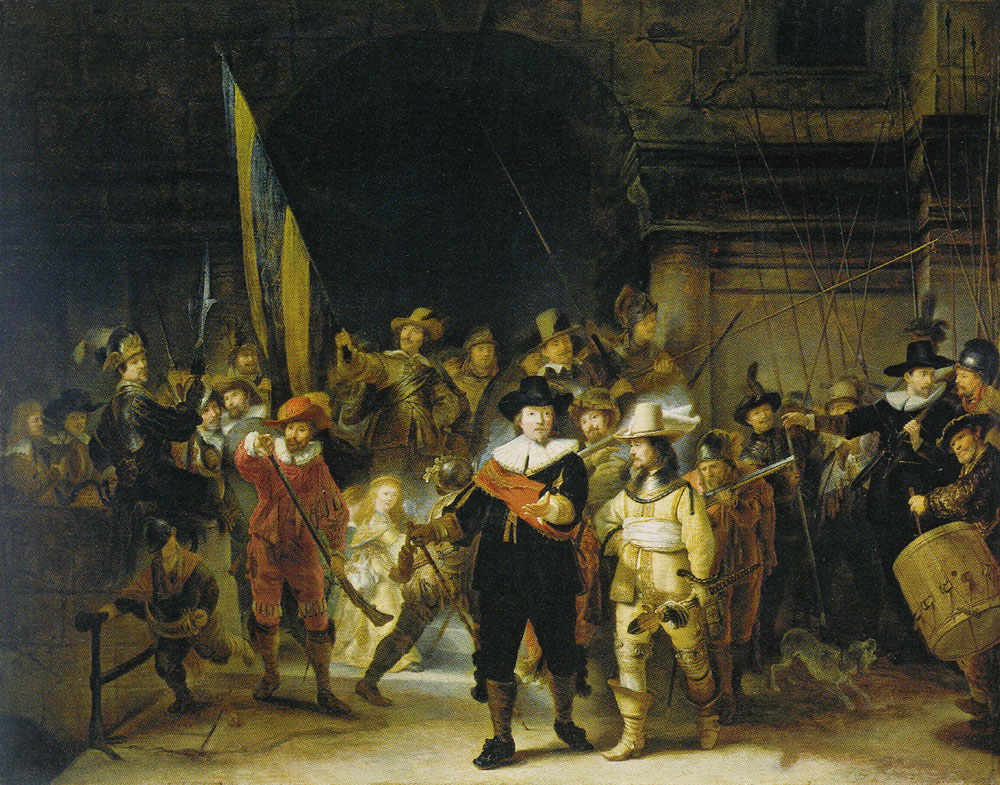
now at the Rijksmuseum. Their original location was on a wall of the “Groote Kamer” ('Large room'),
on the second floor of their house.
Pieter de Graeff and his wife Jacoba Bicker moved in the newly constructed house at Herengracht 573 in April 1666. Pieter was the Lord of Zuid-Polsbroek, Purmerland, and Ilpendam. He served as an alderman (‘schepen’) for the city of Amsterdam and, like his father and grandfather before him, was a director of the Dutch East India Company (VOC) in the Amsterdam chamber. Born in Amsterdam on August 15, 1638, Pieter was the eldest son of burgomaster Cornelis de Graeff (1599–1664) and Catharina Hooft (1618–1691). After obtaining his ‘licentia’ in both Canon and Civil Law from the University of Orléans on 16 November 1660, and having completed his Grand Tour in France and England, he married Jacoba Bicker (1640–1695) in 1662. Jacoba was the daughter of Jan Bicker, a wealthy merchant and burgomaster of Amsterdam, and of Agneta de Graeff van Polsbroek (Pieter’s aunt).

The De Graeffs and Bickers were two of the most influential families in Amsterdam at the time. Through family ties and social relations, Pieter’s and Jacoba’s network included prominent figures from political and cultural circles. Amongst them were Johan de Witt (Grand Pensionary of Holland and husband of Jacoba’s sister Wendela), and captain Frans Banninck Cocq, who was immortalized as the central figure in Rembrandt’s Nightwatch. As we can gather from Pieter’s probate inventory, in the grand salon of their house at Herengracht 573 the couple had a bust and a portrait of Johan de Witt amongst their family portraits, and in their dining room they displayed Gerrit Lundens’ copy of the Nightwatch, which Pieter had inherited from Banninck Cocq.

The De Graeff and the Bickers faced political repercussions due to their republican leanings and support for Johan de Witt. This led to Pieter and other family members losing their political positions following the Disaster Year (Rampjaar) of 1672, a tumultuous time for the Dutch Republic. As a typically life-long appointment, Pieter retained his role as a VOC director until just a few months before his death.
References:
Amsterdam City Archives, Inventaris van het Archief van de Notarissen ter Standplaats Amsterdam (nr. 5075), inv. nr. 5001, fols. 425-493, notary Michiel Servaes (nr. 199), 8 March 1709).
Amsterdam City Archives, Inventaris van het Archief van de Familie De Graeff (nr. 76), inv. nrs. 186-226 (VOC almanacs) and 227 (Groot Geslacht boeck).
C. Piccoli, Pieter de Graeff (1638-1707) and his treffelyke bibliotheek, Leiden: Brill, 2025.